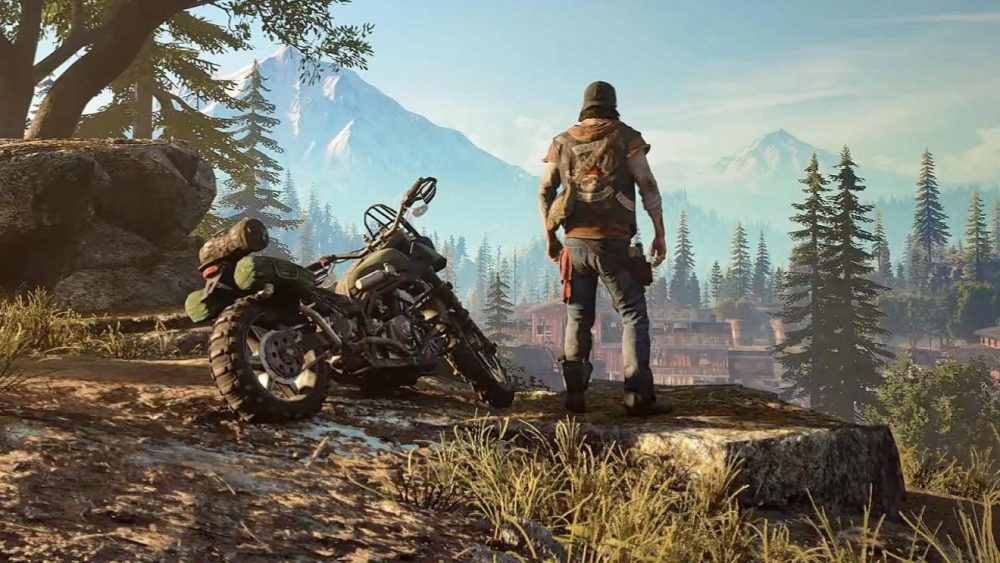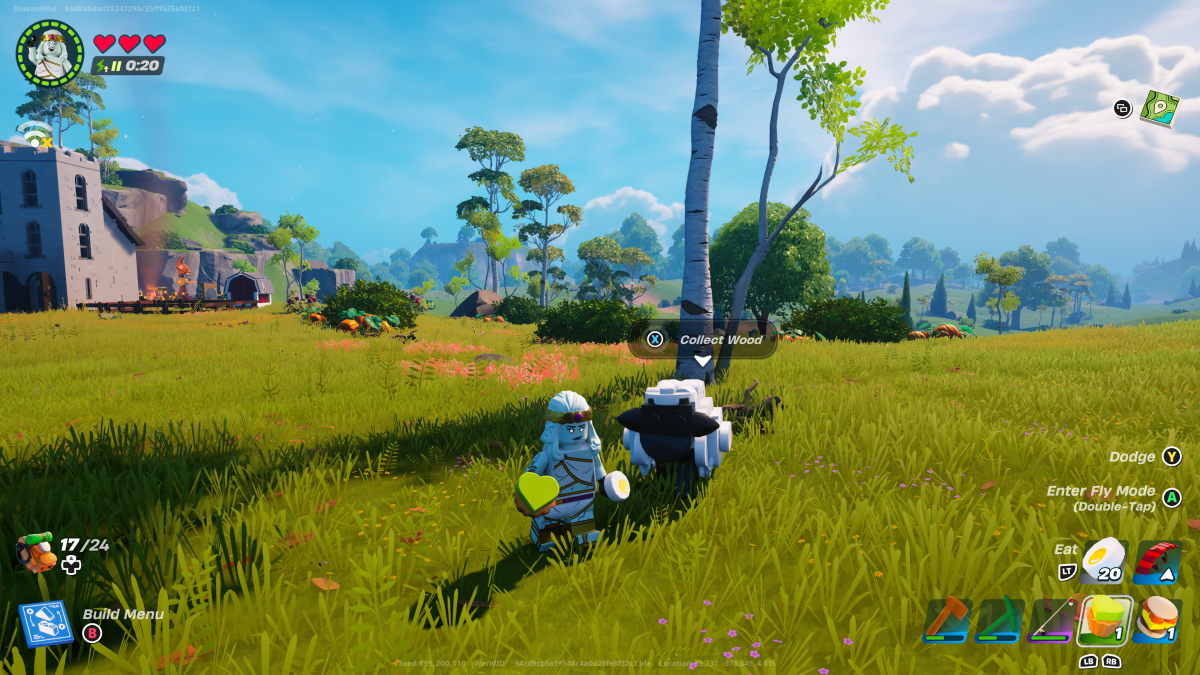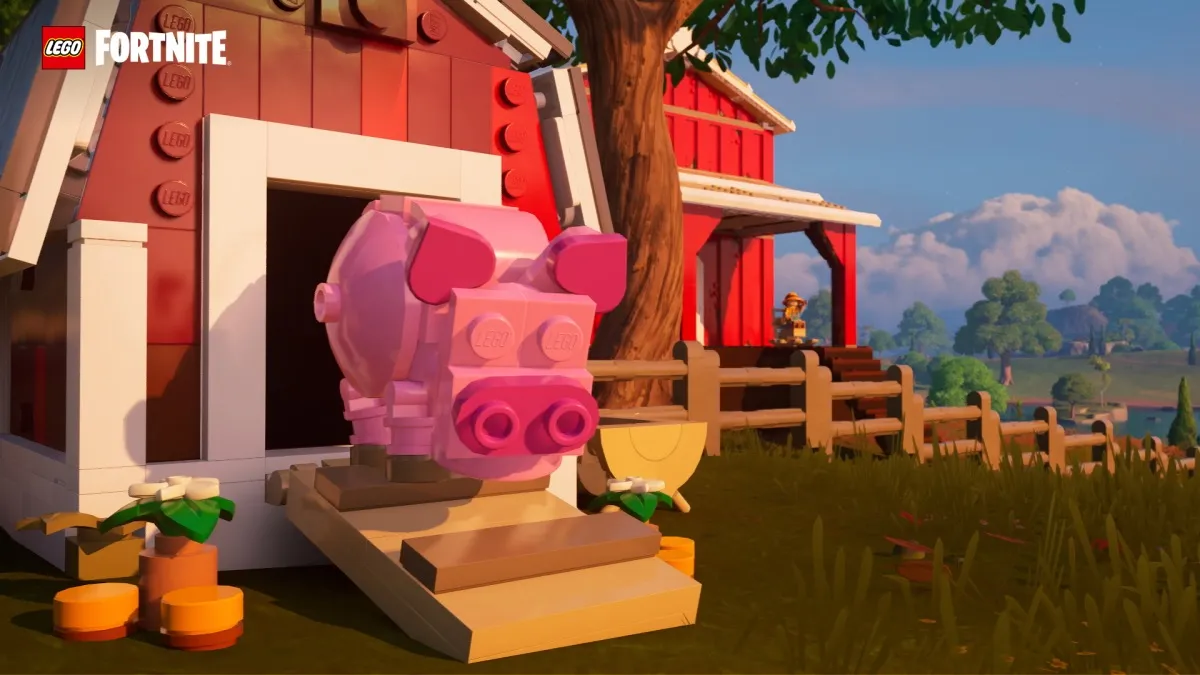Days Gone on PS4
Ever since the launch of the PS4, Sony’s provided no shortage of amazing-looking, mind-blowing first-party exclusive games for its user base to enjoy. inFamous: Second Son heralded the start of an epic console generation for Sony, and was quickly followed up with other outstanding games like Uncharted 4, Bloodborne, and the recent Spider-Man.
Days Gone, unfortunately, doesn’t come close to the same level of quality as its esteemed brethren.
Featuring a protagonist with a name that’s nothing but a whole mouthful of pretentious, Deacon St. John is an outlaw biker struggling to find a reason to keep living when the zombie apocalypse hits Oregon.
The premise is fairly straightforward; Deacon meets Sarah, a nice girl whom you normally wouldn’t associate with outlaw biker gangs, and the two fall in love, eventually getting married. Then, everything changed when the zombies attacked. In a dramatic twist of events, Sarah dies as Deacon tries to get her and his biker friend Boozer out of the city.
Since the death of his wife, Deacon’s never really been the same. He and Boozer spend their days drifting around from camp to camp, helping with supply runs, but never really staying in one place for too long.
Days Gone is primarily an open world game, and therein lies the problem.
Playing as Deacon, you’ll mostly be riding around the world map on your bike, completing main missions to progress the story, along with camp missions to build up Trust levels, and side missions to help flesh out the story a bit more.
The problem with Days Gone being an open world game is that it doesn’t do the story any favors at all, which isn’t good, considering the story and characters themselves aren’t even all that compelling in the first place. The fact that the game’s open world feels empty also doesn’t help matters.

For starters, aside from the aforementioned mission types, there’s pretty much nothing interesting to do in Days Gone’s open world. Every now and then, you’ll run into a civilian who needs rescuing from Freakers or bad guys, and you can send them to a particular camp to increase your Trust level with them.
There are enemy encampments to clear out, and these reward you with loot and also lowers the chances of you getting ambushed when riding around the world. And there are NERO checkpoints, which function as fast travel points and stat upgrade stations once you restore power to them.
I’ll let you know right now that I did a grand total of one civilian rescue event, four enemy encampments, and two NERO checkpoints. After getting a sense of what these open world activities were like, it became clear that Days Gone was set to become yet another ‘large’ open world game with a never-ending checklist or laundry list of things to do.
It felt banal and pointless, so I stopped doing those fairly quickly.
My attention then turned to camp missions. Days Gone features four different camps, each with different leaders you can talk to and vendors who sell different things. The more missions you do for them, or the more resources you turn in, the higher your Trust level with them will rise.
Reach a certain threshold in the Trust level, and the vendors will sell better stuff. These missions were much more worth my time, but that certainly didn’t stop them from feeling repetitive either.
Camp missions are mostly bounty hunts, where Deacon is tasked with tracking down some guy to kill, or clearing out areas filled with bad dudes. After I’d gotten my Trust levels up to a point where I was satisfied, eventually I stopped doing camp missions, too.
You can see where I’m going with this. Days Gone’s world is beautiful, filled with lush forests and greenery to ogle at, along with different biomes that offer a nice change in scenery every now and then. There just isn’t anything particularly interesting to do in this world, which makes driving back and forth between locations kind of irritating.
I almost feel like the story would’ve been far better served if Bend Studio had opted to cut the open world stuff, and made the game a more linear experience similar to The Last of Us or Uncharted.
The most frustrating thing about the game’s open world design is that it gives you this weird illusion of choice when it comes to how you interact with certain characters and camps.
Early on in the game, you’re given the opportunity to retrieve a valuable stash which you can then choose to send to a camp in the east, or to the one in the west. The game makes a big deal out of this, almost as if your decision here would have some sort of major impact on the story.
Well, it doesn’t. Beyond the ability to raise Trust with one camp or another, that decision couldn’t have mattered less in the micro or macro sense of things.
It’s even more baffling when you see the way Days Gone’s story is structured. Every mission is tied to a certain storyline; for instance, anything related to Sarah or NERO is tied to the storyline about Deacon’s past, while anything Boozer-related is tied to the storyline about Deacon trying to take care of his buddy.
As you do more main missions, the completion percentage for these storylines increases, hinting that you’re getting closer to the conclusion. There are so many critical points in the story where it felt like the game was going to present you with yet another important decision to make, similar to the stash situation early on, but it never does.
With the completion percentages letting you know how much of the story you’ve seen, and the way the overarching narrative is broken up into so many different threads, I couldn’t help but wonder if the game’s original vision was meant to be more choice-based, and you’d have to replay the game a couple of times to see different outcomes.
As it stands, though, it feels like a really odd mishmash of weird design decisions that don’t add much value to the game and might even, in fact, detract from the experience a little.
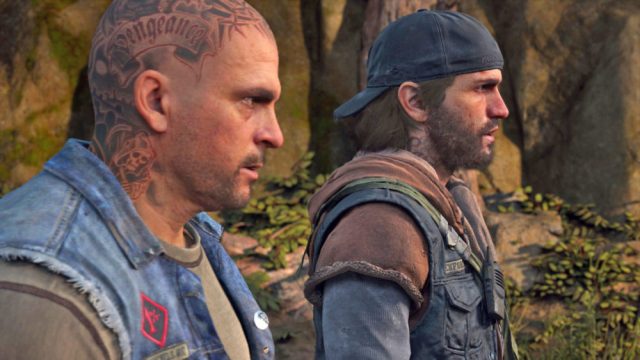
And then we have the actual moment-to-moment gameplay of Days Gone, which mostly consists of riding around on the bike, shooting enemies, and sneaking around them to get stealth kills.
Considering how prominent the motorcycle has been in Days Gone’s pre-release promotional material, I was a little surprised that there wasn’t actually, well, more to the bike itself.
Bike upgrades are limited to engine, fuel, and health upgrades, with the ability to add a nitrous booster to your vehicle a little later on. There are also cosmetic paint jobs that you can unlock as you progress in the story, but beyond that, it’s really just meant to be your primary mode of transportation around the open world.
The bike is essential in that you’ll absolutely need it for fast travel. You’ll need to make sure it’s constantly topped up with fuel in order to access the game’s fast travel function. And in addition to that, you’ll also need to make sure there aren’t any Freaker infestation nests between you and your desired destination.
I didn’t make use of the fast travel feature that much. It eventually got to a point where I was content just cruising around on the bike, rather than having to get off and run around to burn a bunch of zombie nests.
Days Gone’s combat doesn’t fare all that well either. While the third-person shooting is fine for the most part, the stealth bits of the game can feel wildly inconsistent at times, no thanks to how glitchy the enemy AI can be.
There were more than a few instances where the AI just seemed to flip out, walking in little circles, heads erratically darting left and right to the point where it became nigh impossible to get around them safely.
What makes it worse is the fact that Days Gone features a string of mandatory stealth missions where you have to eavesdrop on conversations, while not killing anyone. There was one particular instance where I’d gotten spotted, and the game reloaded the last checkpoint.
But get this: it restarted me at a point where I was crouched and hiding in some bushes, but an enemy guard was somehow already alerted to my presence. I then proceeded to get stuck in a loop where I’d get reloaded to the hiding spot, get spotted, get Game Over-ed, reload to the hiding spot, get spotted, get Game Over-ed, reload to the hiding spot… you get the idea.
This surprising lack of polish isn’t just limited to the stealth portions either; Days Gone’s open world is home to its fair share of floating cars as well, along with zombies that can clip through the geometry and hit you through walls. Which is always fun.
Speaking of Freakers, they’re pretty okay as far as video game zombies go. You’ve got your regular dudes, then you’ve got the Newts, who are basically zombie children that act as scavengers. There are also Screamers, who attract other nearby Freakers to their location, there are Criers (zombie crows), Runners (zombie wolves), Ragers (zombie bears), and Breakers (just really big zombie dudes).
Then there are the Hordes, which are probably the most entertaining part of Days Gone.
Hordes are, as the name suggests, a large gathering of Freakers. Like, really large. Like, easily 200 of them gathered in one spot. Hordes aren’t easily taken down, and they’ll sprint after you relentlessly.
Facing a Horde is one of the more exciting things to do in Days Gone, as you’re forced to make use of literally every explosive you have at your disposal, as well as the environment to lay down traps and use the terrain to your advantage.
The only annoying thing about taking down Hordes is that once you’ve figured the environment out, the fight just becomes a matter of kiting the group around the area multiple times, firing at them till they finally go down. This can get dragged out for a good while, and if you make even the slightest mistake while facing a Horde, you’ll have to restart the entire encounter.
Hordes are definitely a cool feature in the game, though I did feel that these encounters would’ve benefited from a slightly smaller group size, just so the fights wouldn’t feel like they’ve gone on for too long.
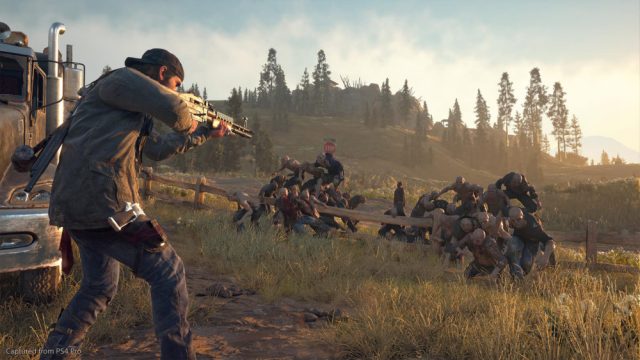
Anyhoo, as if all of these annoyances weren’t enough to sour my experience with the game already, there’s still the story to talk about.
Days Gone doesn’t have a good story. The setup and premise are cliched, yes, but that doesn’t mean Bend couldn’t have still given us characters that actually felt relatable or a narrative that actually hooked us.
Deacon’s a likable enough dude who can sometimes feel a tad preachy when it comes to his code about not wanting to kill unarmed women, even if said women tried to kill him five seconds before. He’s at his best and most compelling when the game showcases his immense suffering and inability to move on from the memory of his dead wife, but that’s about the only thing that shapes his identity as a character.
The supporting cast is forgettable for the most part, save for his biker comrade Boozer, who manages to inject some much-needed humor into the writing.
Most of all, Days Gone’s story suffers greatly because of the lack of a purpose to drive the narrative, and the lack of a central villain who can compel us to keep going.
I get that the game is supposed to put us in the shoes of Deacon and make us feel like a drifter who just spends his days wandering from one end of the world to the other, doing odd jobs here and there to scrape by. But do that for more than a few hours with very little purpose, and things get tiring quick.
By the time we do get some semblance of purpose for Deacon, some form of raison d’être, we’re already in the final act of the game. And, somehow, this is where the game’s narrative and structure gets even worse. This is only exacerbated by the introduction of yet another last-minute villain who feels like a kooky cartoony caricature with no real depth to speak of.
If there’s one really positive thing to say about Days Gone, it’s that the game really does a great job of capturing that drifter-biker vibe. The soundtrack is positively lovely, incorporating romantic guitar twangs that suit Deacon’s vibe of riding across the open road, catching the wind in his leather jacket.
Days Gone is an alright first step for Bend Studio. It’s a competent open world game with massive, diverse environments for you to explore, even if there aren’t actually a lot of interesting things to do. It’s also very vanilla, and there just isn’t much substance beneath its glossy surface.
Score: 3/5 – Fair
For more information on how we review games, check out Twinfinite’s review policy here.

